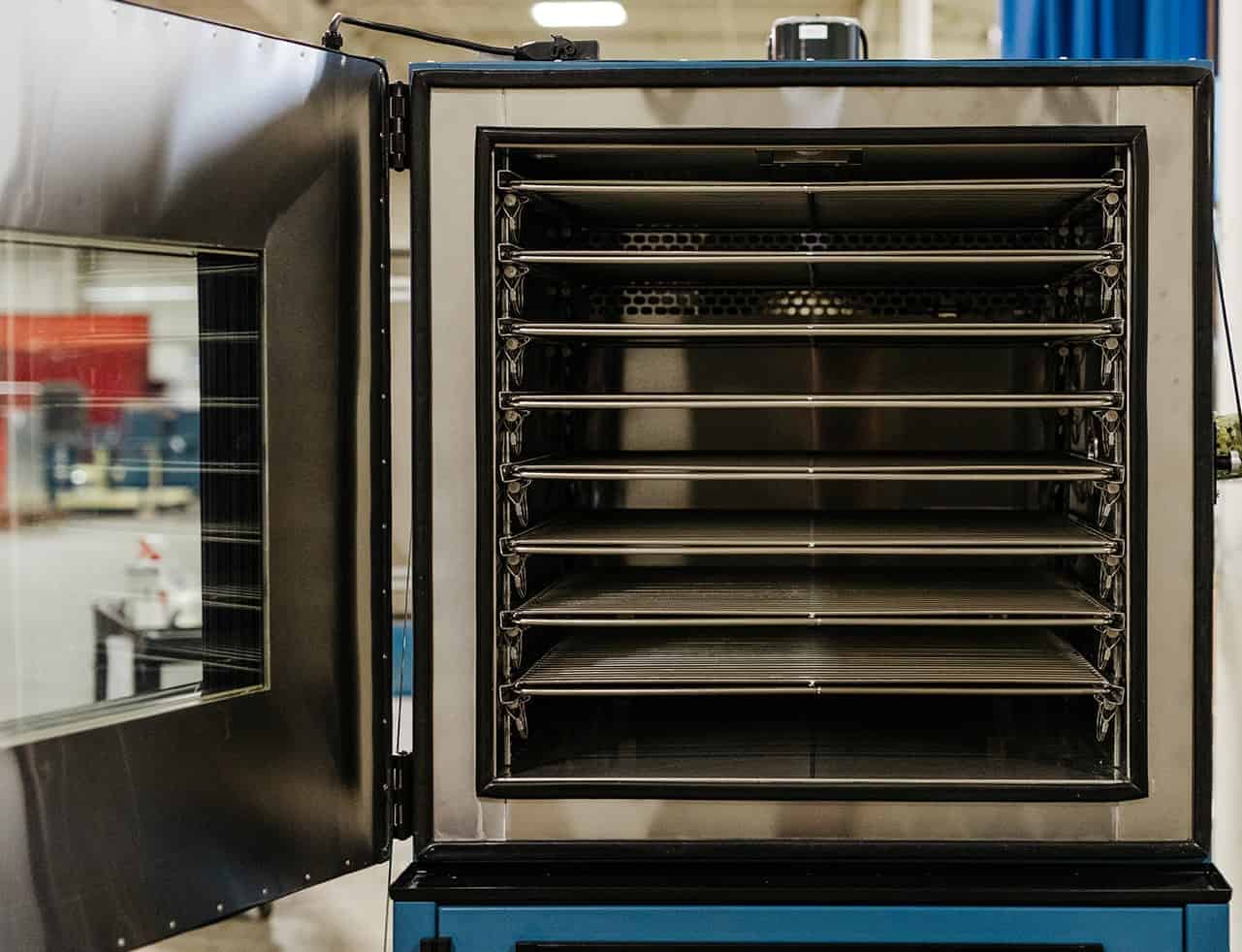Precise temperature and humidity control within an environmental chamber is a complex issue. To understand the nuances of humidity control, one must understand the importance of precise temperature control and the meaning of “relative” in relative humidity readings.
A good example of the importance of temperature control in relative humidity calculations is found in ASHRAE 1993: At a constant moisture content [a true measure of humidity] of a 12°C dewpoint at 23°C and 50%RH, a short-term temperature fluctuation of +1°C results in a fluctuation of relative humidity readings between 47% and 53%, even though the true moisture content in the humidity test chamber hasn’t changed.
This is the result of relative humidity being calculated by the measured moisture content of the air relative to the moisture-holding capacity of the air at any given temperature, referred to as the dry-bulb temperature.
The warmer the air, the more moisture it can hold within the same volume of space, therefore it takes significantly more water vapor, in general, to elevate the relative humidity of air as it increases in temperature. The opposite is true as the air cools. Due to this fact, 50% relative humidity at a dry bulb temperature of 85°C is an exponentially higher moisture level than 50% at a dry bulb temperature of 10°C.
At lower temperatures, the relative humidity measurement reading is affected by a change in overall moisture content of just a few grains per pound of air, whereas it may take grams of moisture to change the relative humidity reading at significantly higher temperatures.
Stability is the Key to Humidity Control
The key then to precise humidity control in an environmental test chamber is stability. Typical environmental chamber control tolerance is +1°C and +5% relative humidity after stabilization. Stabilization is defined within the industry as the point when the chamber interior surfaces and unit under test (UUT) change temperature less than 2°C per hour, and without variations in load either external or internal (i.e., door openings or varying heat loads generated by the UUT).
Challenges exist with environmental chamber control when instability created by constant or intermittent changes in temperature and/or humidity is required within environmental testing profiles. These are commonly referred to as cycling profiles, which consist of infinitely variable combinations of “ramp” and “soak” steps in a specific sequence.
A ramp step can change temperature, humidity, or both simultaneously in either direction up or down at linear rate over a set time period. A soak step holds a constant temperature and humidity setpoint for a set time period. In complex cycling profiles, the chamber heating, cooling, humidification, and dehumidification systems work together, essentially chasing the elusive ever-moving setpoints.
It is during cyclical profiles that maintaining typical stability tolerances can become all but impossible because instability is intentionally introduced. Setpoint changes across a short-range and/or time period create less instability compared to wide-ranging changes over shorter periods of time, which further impact the chamber’s ability to precisely control the ever-changing variables. This often results in short-term oscillations of temperature and/or humidity beyond the limits of stabilized control tolerances.
Other Considerations for Precise Humidity Control
Temperature and humidity control can be further upset when chamber mechanical systems change from one state to another. For instance, a ramp step might require a chamber that is operating at a high temperature/low humidity to simultaneously change to a low temperature/high humidity within a span of “x” minutes.
Contrary to what one might think, “cooling” and “humidifying” systems may not be initially required to operate, but instead the chamber control system simply reduces heating and dehumidification outputs, allowing the chamber to do a controlled drift which follows the moving setpoints of temperature and humidity.
However, at some point during that ramp step, reducing heating and/or dehumidification fails to provide the response necessary to chase the setpoint, and the controller energizes the chamber cooling and humidification systems by requiring small but steady increasing outputs of cooling and humidification. During these changeover periods, it is also common to see short-term oscillations in temperature or humidity control.
There can also be situations where a cyclical profile has ramping requirements that exceed the capability of the chamber being used, but these are typically related to chamber capacity and not control.
Chamber Capability is Dependent on the Desired Profile
In summary, short-term oscillations that extend beyond normal stabilized control tolerances are common and expected with cyclical profiles. Considerations must be given to the ranges, ramp rates, and complexity of cyclical profiles.
Except in very rare cases, these short-term oscillations have no negative impact on the quality or legitimacy of the overall test sequence, providing that the final setpoint conditions for temperature and humidity are fully achieved and are not beyond the capability of the chamber being used.
Russells Technical Products is your subject matter expert for thermal cycling chambers and humidity chambers. Our team of application engineers will walk with you through the process of understanding your testing specifications and applying the right solution to meet your requirements. Contact us to learn more today.

